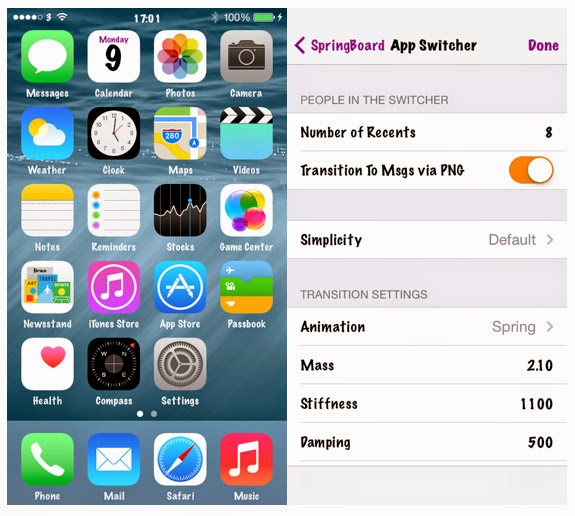In all the excitement around the new iPhone product launches, there was no mention of Apple’s ebook business, iBooks. While not as large and dominant as iTunes, iBooks is likely the No. 2 ebook retailer in the U.S. and around the world.Today, Apple’s 800 million iOS users will be able to install iOS 8. Significantly for iBooks, this is the first version of the iOS that will come pre-installed with the Apple iBookstore. According to the company, some 150 million devices already have iBooks (as of June 2013), which means 650 million devices will have iBooks for the first time. In the year since iOS 7 was launched, about 90% of devices had it installed.
While our main iOS 8 roundup focuses on the major changes announced by Apple, this iOS 8 roundup highlights some of the more interesting but smaller additions and refinements made to Apple's mobile operating system throughout the beta testing period.
What are extensions?
 Simply put, extensions allow iOS apps to “lend” functionality to one another or to the operating system. Apple is allowing developers to create and distribute extensions whose functionality falls in six distinct areas:Actions allow you to manipulate content inside another app; for example, you could use an Action to translate a non-English Web page right inside Safari.
Simply put, extensions allow iOS apps to “lend” functionality to one another or to the operating system. Apple is allowing developers to create and distribute extensions whose functionality falls in six distinct areas:Actions allow you to manipulate content inside another app; for example, you could use an Action to translate a non-English Web page right inside Safari.
Custom Keyboards provide keyboards other than the ones already built into iOS. Third-party app developers could take advantage of this functionality to offer innovative input methods, support unusual languages and scripts, or even offer input mechanisms for specialized applications.
Document Providers enable apps to save and retrieve documents from a variety of services, such as cloud-storage providers and network disks.Photo Editing extensions can be used to manipulate photos and videos—everything from providing a filters to the host app to offering full-blown editing services without having to move your content from one program to another by saving it in your Photo Album first.
Sharing extensions expand iOS’s ability to share data with external services such as social networks or cloud-storage websites. The functionality they offer is similar to Document Providers, but the process is one-way: The app can export data through a sharing extension, but not load from it.Today widgets provide interactive functionality that can be accessed from the panel you slide down from the top of your iPhone and iPad’s screen, giving you immediate access to data, such as a status report from your smart thermostat or a handy calculator.
Who can use extensions?
Any device that can run iOS 8 is also capable of supporting extensions. But an individual extension’s ability to work on your device depends on a number of factors, such as whether its developer decides to support the appropriate form factor, or whether the code behind the extension depends on some hardware feature that is only available in newer iPhone and iPad models—such as, say, Touch ID.Once OS X Yosemite launches later this fall, extensions will also be available to Mac users, although under slightly different rules and conditions.
What’s the big deal? I could do most of this stuff before!
While some of this functionality, such as custom keyboards, makes its debut on iOS 8, the ability to export and share data is not new, and was widely available in previous versions of the operating system. What has changed is the way in which this functionality is made available from one app to the other.
Until now, iOS’s sandboxing model prevented apps from accessing each other’s functionality. This meant that if developers wanted to, say, provide support for saving and retrieving documents from Dropbox, they would have to embed the functionality right in their software, leading to problems like duplication of code, inconsistency in the functionality provided by different apps, and the need to log in to the same service multiple times.

Post a Comment Blogger Facebook